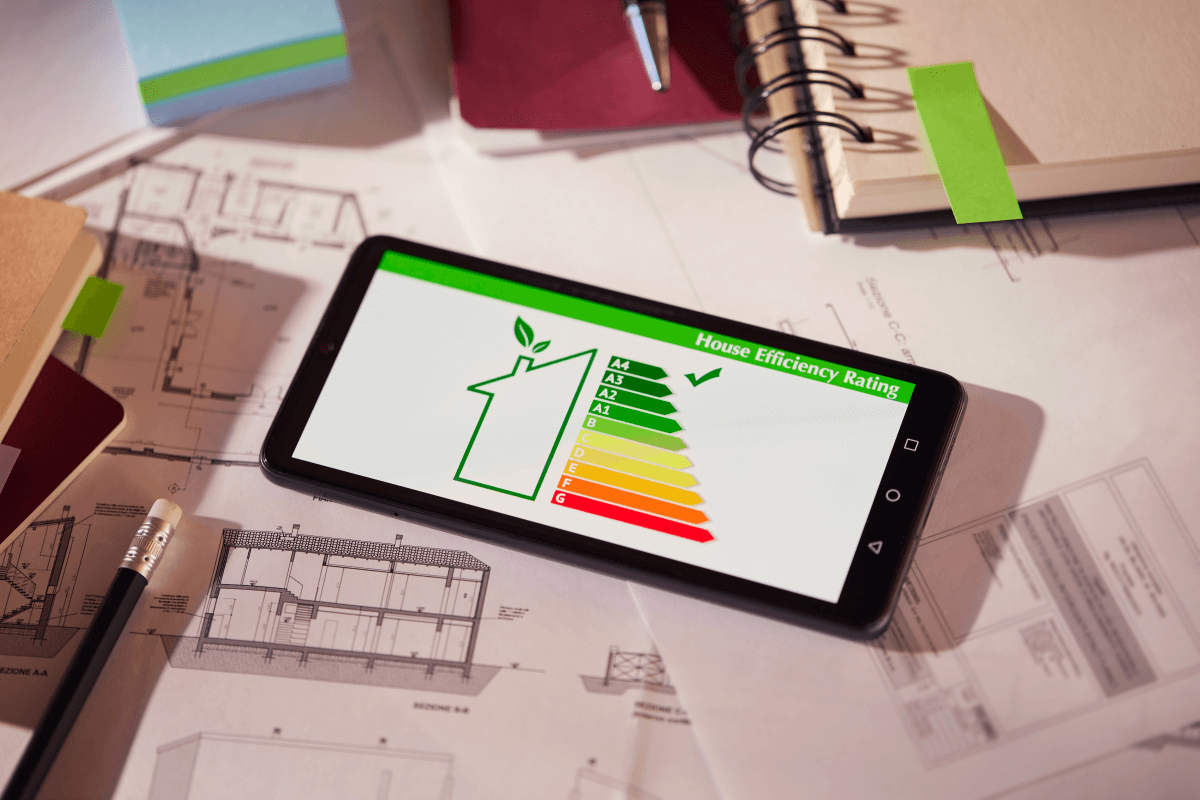Making your home more energy-efficient can save you money and help protect the environment. By improving your home’s energy use, you can reduce your utility bills and make your home more comfortable. Here are 14 easy and practical ways to save energy at home.
Top 14 energy-saving home improvements
Creating an energy-efficient home is one of the best ways to reduce your carbon footprint and save money on energy bills. With simple upgrades and smart choices, you can start your journey to more sustainable living. Here are 14 practical energy-saving home improvements to consider.
-
Energy-efficient lighting
Switching to LED bulbs is one of the easiest ways to save energy. LED bulbs use less electricity and last longer than traditional bulbs. You can also install motion-sensor lights or smart bulbs that you can control with your phone to save even more energy.
-
Insulate your loft and walls
Good insulation keeps your home warm in winter and cool in summer, reducing the need for heating and air conditioning. This can save a lot on energy bills. Insulating your loft alone can save up to £250 a year, and insulating both the loft and walls will improve your home’s energy-efficiency.
-
Install smart meter controls
Smart meters help you track your energy use in real time. You can see when you’re using the most energy and make changes, like turning off appliances when not in use, which can help reduce energy waste.
-
Solar panels
Solar panels let you generate your own electricity from the sun. While the installation can be expensive, it helps reduce your energy bills over time, and you can even sell any extra energy back to the grid. Plus, there are government incentives to reduce the cost of installing solar panels.
-
Heat pumps
Heat pumps are an energy-efficient way to heat your home and water. They use renewable energy from the air or ground to heat your home, saving you money in the long run. Though they’re costly to install, they are cheaper to run than gas boilers.
-
Upgrade your windows
Old windows let heat escape, making it harder to keep your home warm. Double-glazed windows trap air between the panes of glass, providing an extra layer of insulation. This keeps your home warmer in winter and cooler in summer. There are also government schemes to help with the cost.
-
Replace external doors
Just like windows, old external doors let heat escape. Upgrading to energy-efficient doors helps maintain the temperature inside your home, keeping it warmer in winter and cooler in summer. Insulated doors are a good choice, as they also reduce noise.
-
Use energy-efficient appliances
When replacing old appliances like washing machines, fridges, and dishwashers, choose energy-efficient models. These use less power, helping you save on your energy bills.
-
Install draught-proofing
Draughts around doors and windows let heat escape. You can add draught-proofing, like weatherstripping or draught excluders, to stop heat from leaving and cold air from entering, making your home more energy-efficient.
-
Switch to a smart thermostat
A smart thermostat helps you control your heating and cooling with your phone, even when you’re not home. It ensures your heating or air conditioning is only on when you need it, saving energy.
-
Use heavy curtains or blinds
Heavy curtains or insulated blinds help keep your home warmer in winter and cooler in summer. They act like an extra layer of insulation and reduce the need for heating or air conditioning.
-
Install a hot water tank jacket
A hot water tank jacket helps keep your water warm for longer, so you don’t need to keep reheating it. This simple step stops heat from escaping and reduces energy use.
-
Use a power strip
Instead of leaving devices plugged in all the time, use a power strip that you can turn off when you’re not using them. Many appliances still use energy even when turned off, so switching off the power strip helps save energy.
-
Improve ventilation
Good ventilation helps keep your home comfortable without needing to use heating or cooling. Using ceiling fans or opening windows lets fresh air move through your home and reduces the need for extra energy.
Grants for energy-efficient home improvements
If you want to improve your home’s energy efficiency but can’t pay for everything upfront, there are grants that can help. Government schemes offer grants for things like loft insulation and solar panel installation. These grants make it easier for homeowners to make their homes more energy-efficient without having to pay a large amount upfront.
Other ways to finance energy-efficient home improvements
If the grants don’t cover all the costs, there are other ways to pay for your energy-saving improvements. You could take out a secured home improvement loan . These loans let you pay for your upgrades over a longer period of time, making it easier to manage the cost. Secured loans usually have lower interest rates than unsecured loans, so they’re a more affordable option for big projects. To find the best loan for you, talk to a broker who can help you understand your options as your home could be repossessed if you don’t meet your repayments on a secured loan.
Why should you make your home more energy-efficient?
Making your home more energy-efficient is a good way to save money and help the environment. Simple changes like switching to energy-efficient lighting and bigger projects like installing solar panels can lower your energy bills and reduce your carbon footprint. Your home will also be more comfortable, and these improvements could increase its value in the future.
By making your home more energy-efficient, you’re not just saving money—you’re investing in a better future. Whether you want to lower your bills or help the environment, these home improvements are a great start. If you’re planning some energy-efficient upgrades to your home and need to raise funds, speak to a broker today to understand the financing options available to you.
